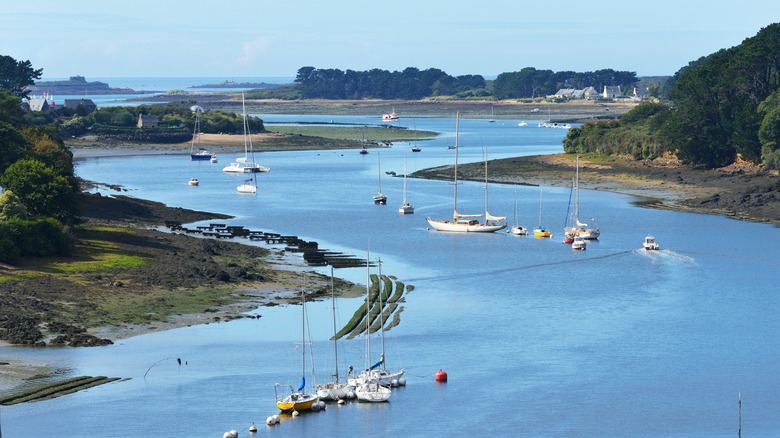What Is A Tidal Delta?
A tidal delta is not the same as a river delta. River deltas are created by soil deposits forming from the outflow of the water, such as on the Mississippi and Atchafalaya Rivers. A tidal delta is the sand bar or shoaling area left at the mouth of a river by the movement of bottom mud and sand by a diurnal tide and the currents that result from that tide.
Diurnal and Semidiurnal Tides
Diurnal and Semidiurnal Tides
A diurnal tide has one high tide and one low tide a day. A semidiurnal has two high tides, each about the same height and two low tides each day. Both produce tidal currents, the horizontal movement of the water resulting from the ebb and flow of water associated with the tide.
The River Contributes to the Tidal Delta
The River Contributes to the Tidal Delta
The river's contribution to a tidal delta begins with the flow of the river against an incoming tide, causing particulates in the tide to be deposited along a line across the mouth of the river. Later, as the bar builds, the river adds its own burden of silt to the bar.
Tidal Deltas vs. River Deltas
Tidal Deltas vs. River Deltas
When a river delta like the Mississippi Delta forms, its tributaries will look like fingers spreading from a hand; eventually a few strong tributaries will form as the smaller channels silt in. When a tidal delta silts in, a new channel will not form unless by the action of a storm surge or dredging by man.
Notable Deltas
Notable Deltas
The tidal delta of the Ganges River is the largest, spanning most of Bangladesh and the West Bengal region. The Niger River Delta is part tidal and part river delta and sits at the end of the 2,500 mile-long Niger River, the third longest river in Africa. The Mississippi River Delta takes in flows from the Atchafalaya Basin, the most ecologically diverse area in the United States.
Effects
Effects
When a tidal delta silts in and finds a new channel, particularly in a place where new channels are not dredged to keep the river to a particular course, then business, people and lives dependent on the river must also move. In places where dredging is the rule, as with the Mississippi, the economic costs of a tidal delta can be measured by the cost of near-constant dredging.
References
- Tidal Signatures in Modern and Ancient Sediments; Fleming et al.; International Association of Sedimentologists; 1995
Cite This Article
MLA
, Will Charpentier. "What Is A Tidal Delta?" sciencing.com, https://www.sciencing.com/tidal-delta-5154405/. 22 November 2019.
APA
, Will Charpentier. (2019, November 22). What Is A Tidal Delta?. sciencing.com. Retrieved from https://www.sciencing.com/tidal-delta-5154405/
Chicago
, Will Charpentier. What Is A Tidal Delta? last modified March 24, 2022. https://www.sciencing.com/tidal-delta-5154405/
